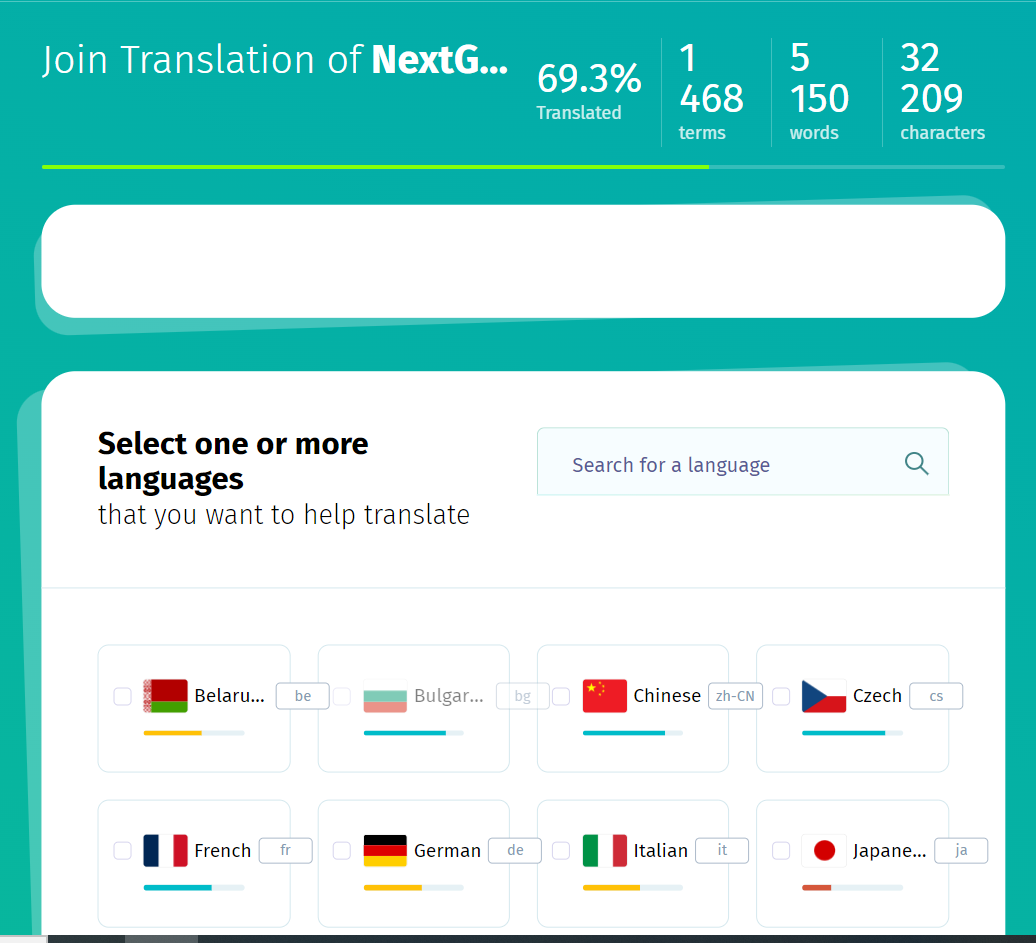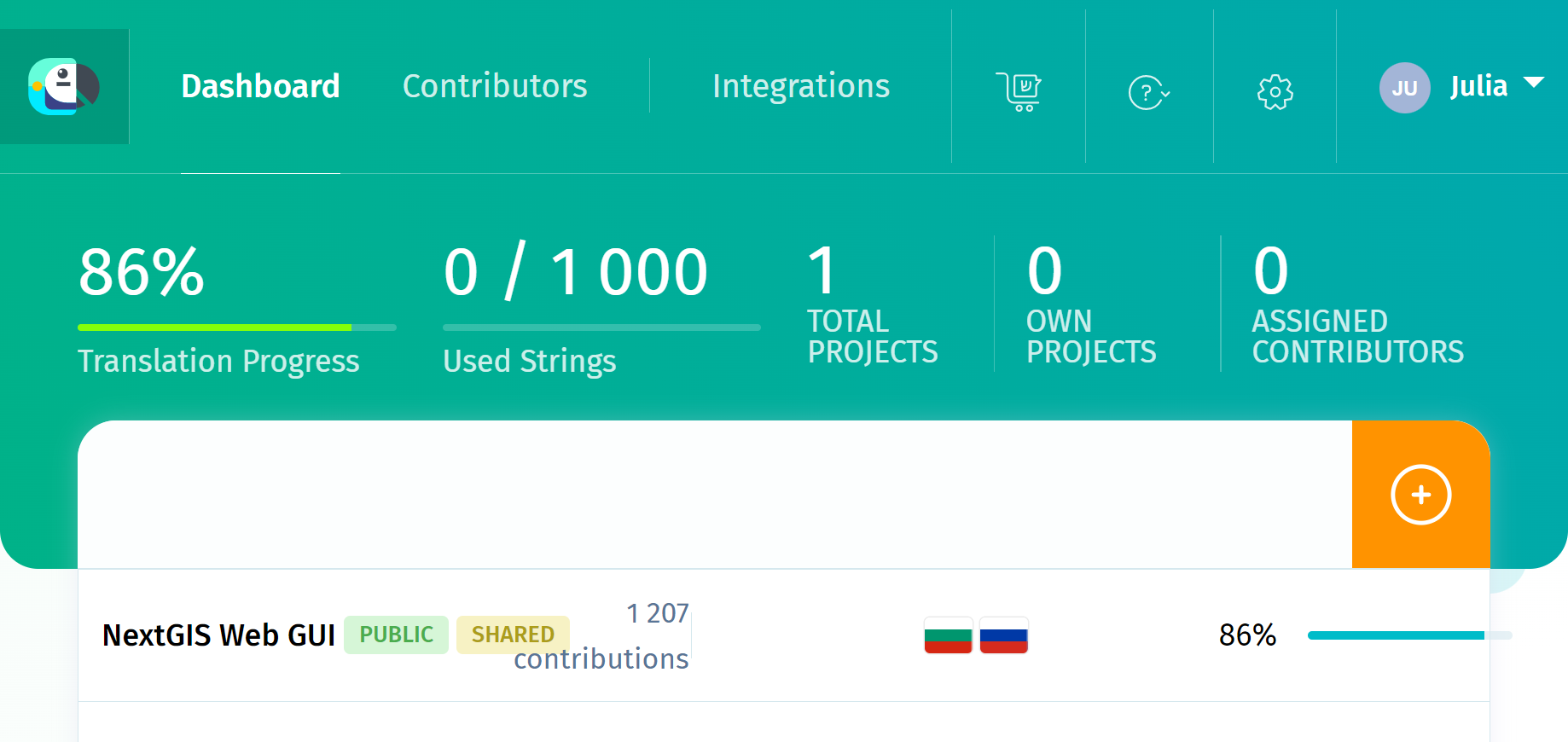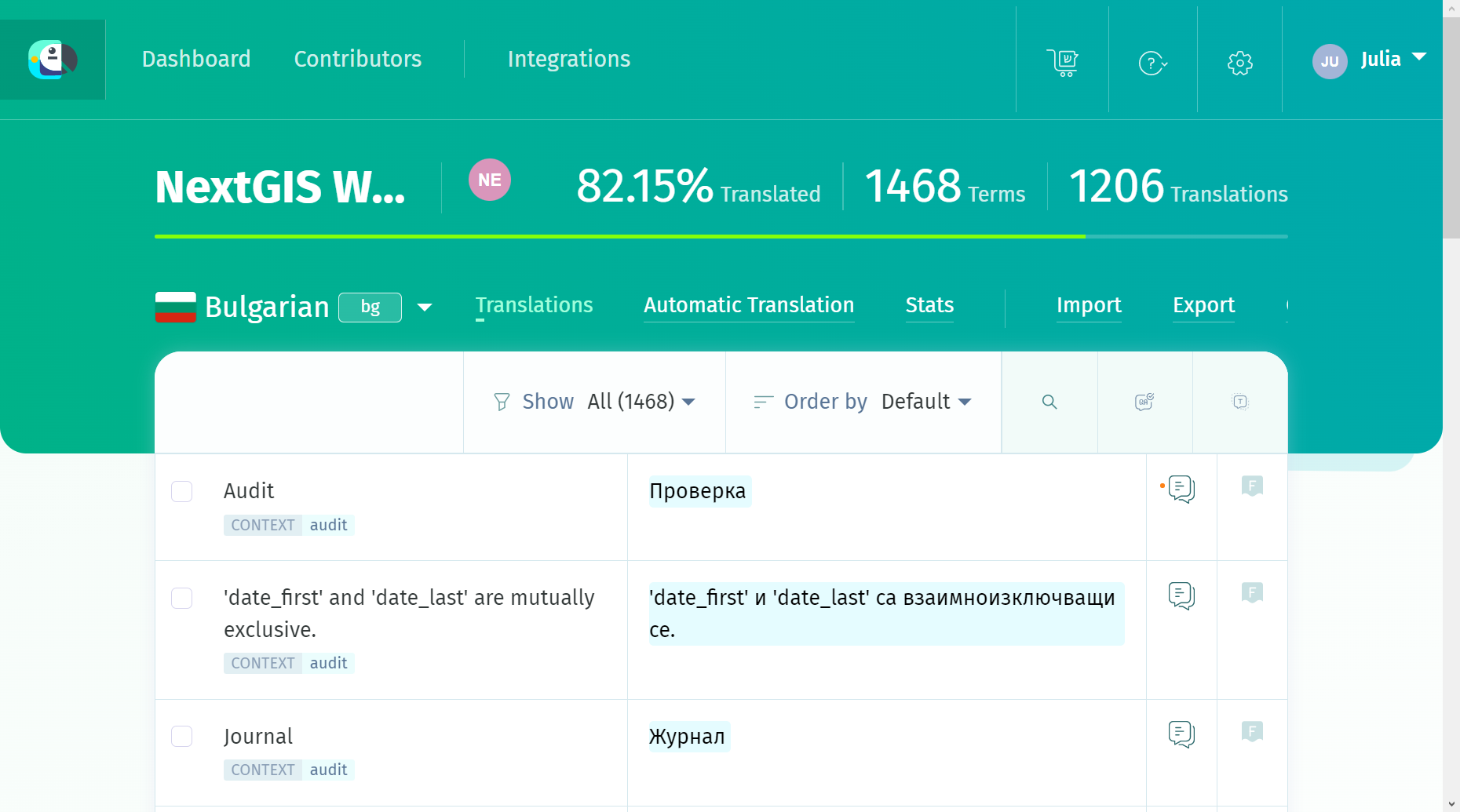1.24. How to improve translation
NextGIS Web is an open solution, which can be improved by any user. The following user interface languages are currently available for NGW:
Bulgarian
Czech
Deutsch
English
Spanish
French
Italian
Portuguese
Russian
Chinese
We invite users to contribute to the quality of our translations. If you are an expert in any of the listed or other languages, you can improve the current user interface by yourself. As soon as 80% of translated content appears, we add a new language to NGW.
1.24.1. Join the project
The translation of NextGIS Web is carried out on the platform POEditor. First, you need to sign up. After authentication you can join the NextGIS Web GUI project via this link. Then select languages and click Join translation.

Pic. 1.105. NextGIS Web GUI project for user interface translation
After that, this page will display a list of projects (in our case, NextGIS Web GUI) that have a set of selected languages.
1.24.2. How to translate
To start translating click on the icon of a specific language in the project.

Pic. 1.106. Selecting a language for translation
Row order and filter are customizable. There is also a search.

Pic. 1.107. Translator UI window
Strings often contain such parameter names as ‘date_first’ and ‘date_last’ like in the image above. They don’t need to be translated.
Bulgarian translation example:
en. - ‘date_first’ and ‘date_last’ are mutually exclusive.
bg. - ‘date_first’ и ‘date_last’ са взаимноизключващи се.
Also you can see these parameters: %s, %d, %f and like these that also don’t require the translation. When the program is running, they are automatically replaced by string or numeric parameters.
Example 1:
en. - User count: %d.
bg. - Брой потребители: %d.
Example 2:
en. - Field ‘%s(?)’ encoding is broken.
bg. - Кодировката на полето ‘%s(?)’ е счупена..
Please ignore the fact that the quotation marks and brackets are always different (single ‘, double ” or () ). Don’t change and leave them the same when translating - this is important for the code to work correctly.